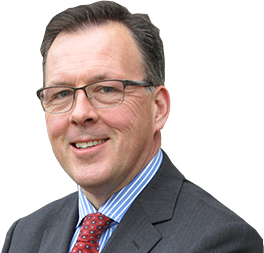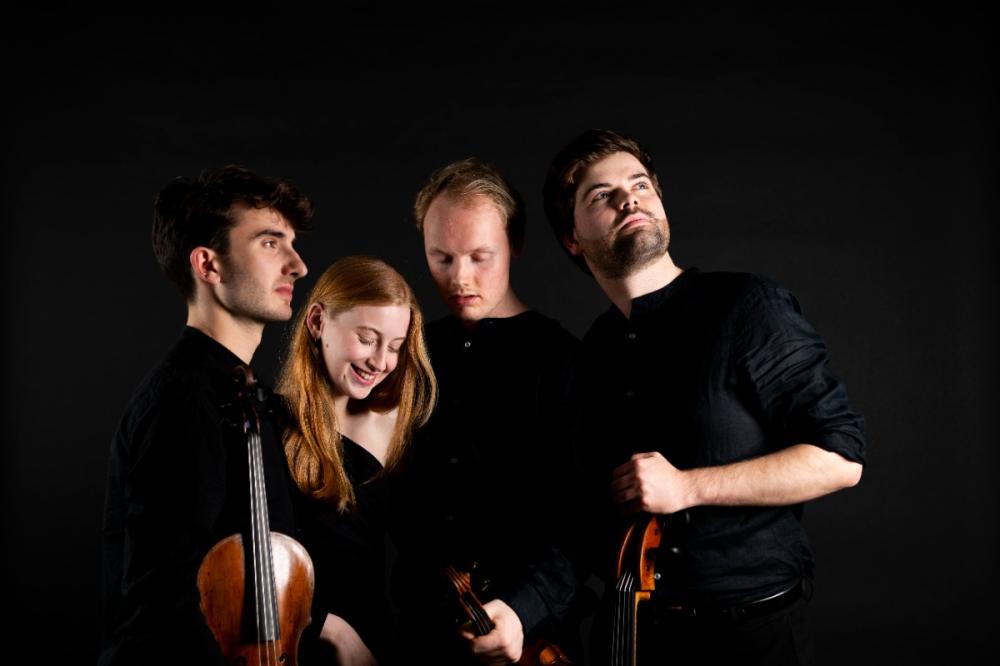search
date/time
 | Lancashire Times A Voice of the Free Press |

Andrew Palmer
Group Editor
9:39 AM 10th March 2025
arts
Interview
The Fibonacci Quartet: Harmony In Four Parts

Fibonacci Quartet
Photo: Julia Bohle©
As they prepare for their upcoming performance at the Old Swan Hotel, Harrogate, as part of the Harrogate International Sunday Series on 6 April, cellist Findlay Spence has managed to escape a rehearsal to share insights into the quartet's journey, their unique musical chemistry, and the emotional landscape of their carefully curated programme.
"The others weren't so lucky," Spence says with a grin, referring to his fellow musicians who remain in rehearsal.
"They were all students who just enjoyed playing together, and that sort of snowballed into something quite exciting," he explains. "We then studied at The Reina Sofía School of Music in Madrid with Günter Pichler from the Alban Berg Quartett."
Joining an established ensemble might intimidate many musicians, but Spence found an immediate connection.

Fibonacci Quartet
Photo: Julia Bohle©
This personal chemistry directly influences their musicality. "What makes it gel is rehearsing and performing together in settings where you can't hide who you are or put on a mask," Spence reflects. "The relationships are very deep and meaningful, and if it's not with the right people, finding musical cohesion is impossible."
The Harrogate performance showcases a thoughtfully constructed program featuring Haydn, Smetana, and Beethoven. The quartet takes a democratic approach to leadership, with Luna de Mol playing first violin for the Beethoven String Quartet No. 14 in C-sharp minor and Haydn's "Sunrise" Quartet, while Czech-born Kryštof Kohout leads for Smetana's String Quartet No. 1 in E minor, "From My Life."
Kohout's connection to the Smetana piece runs especially deep. "Kryštof has a real personal connection with the Smetana. He grew up playing Czech folk music and songs, and he is very much rooted in that tradition. For him, it's a musical homecoming," Spence explains.
The Smetana quartet tells an autobiographical story through its four movements. "It's a journey," Spence says. "The first movement depicts his youth and teenage angst. The second reflects Smetana moving into higher society and feeling that conflict between upper-class dances and the Czech folk tradition. The third movement is a love song to his wife, an imagined remembered first meeting, and the last movement is a fantastic folk dance which ends with the musical depiction of the tinnitus that plagued him later in life—like Beethoven, he went deaf in his later years."
Programming for a recital by a string quartet presents both opportunity and challenge. "We're spoilt for choice," Spence admits. "Every composer wrote what we think of as their finest works for string quartet, so there's no lack of options—which is fantastic and terrible at the same time." This abundance leads to spirited discussions during their travels. "Considering all the hours we spend on trains and flights, we use the time to discuss different pieces we would like to perform and what would work well together."

Final Auditions Fibonacci Quartet
Photo: Kaupo Kikkas©
The Fibonaccis draw inspiration from the great quartet traditions of the past, particularly the Czech ensembles. "We admire the Smetana, Janáček, and Czech Quartets that wear their hearts on their sleeves to convey raw emotion," says Spence. "It's not always the cleanest, most perfect playing, but it grabs you by the throat—a visceral experience."
Spence's own musical journey began modestly in Inverness on Scotland's east coast. "The cello was offered as an instrument to learn at my local primary school, and after just one lesson, I fell in love with it," he recalls. He continued playing until age 16, when he realised he needed to pursue it further. "I started having lessons with a teacher in Edinburgh, and everything snowballed from there. It all started simply, in a very ordinary way."

What makes quartet playing special for Spence is the collaborative interpretation that emerges from four individual perspectives. "We all come to it from different places, with different priorities and ideas. It's that friction between four interpretations coming together that creates something none of us could have conceived individually. It sounds a little bit cheesy, but that tension and difficulty is what allows a cohesive interpretation to emerge."
When not performing, the quartet enjoys good food, card games, film nights, and even tossing a frisbee—which they always pack for tours, and there’s plenty of open space on Harrogate's famous Stray.
As for what audiences can expect from their Harrogate performance, Spence promises an emotionally charged experience. "These pieces are incredibly emotional and personal to the composers. What we try to convey is something alive, in the moment, and spontaneous. These works need to be living, so when we're performing, we try to make sure we're surprising ourselves as well. Hopefully, it will be edge-of-the-seat stuff—that's the idea."
With their combination of technical brilliance, emotional depth, and genuine camaraderie, the Fibonacci Quartet seems poised to take their place among the finest chamber ensembles of their generation, one perfectly balanced note at a time.

Haydn String Quartet in B flat major, Op.76, No.4 ‘The Sunrise’
Smetana String Quartet No.1 in E minor, ‘From My Life’
Beethoven String Quartet No. 14 in C sharp minor, Op. 131
click here.